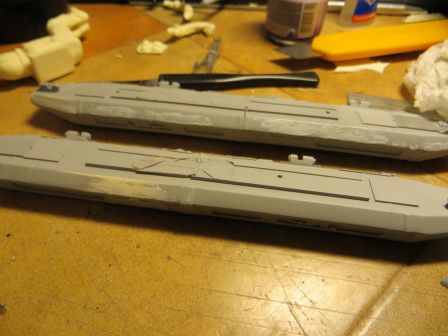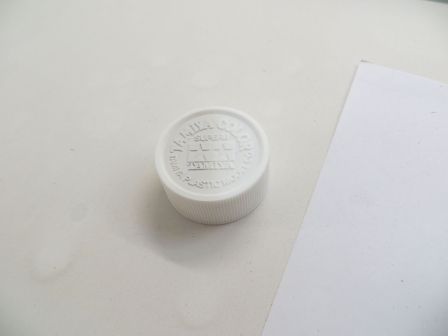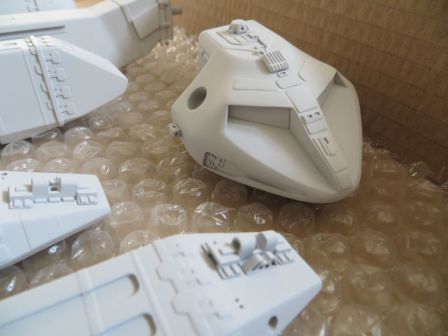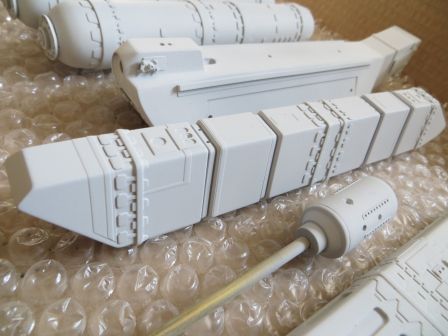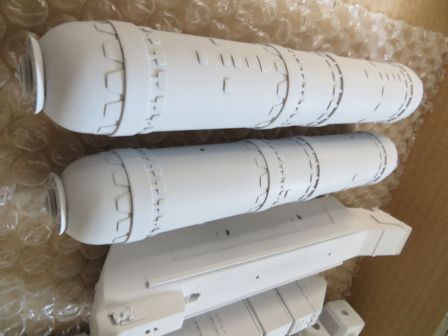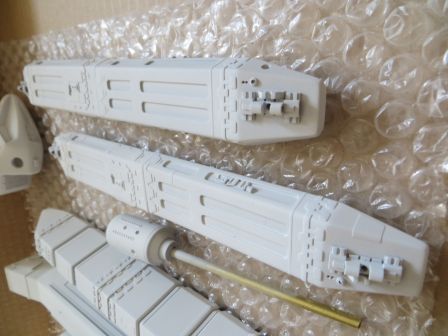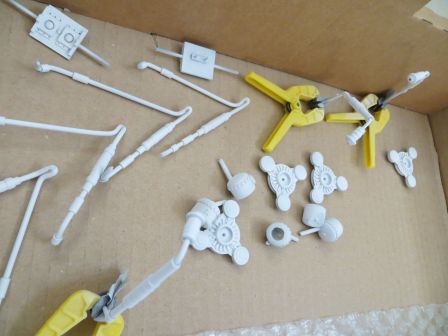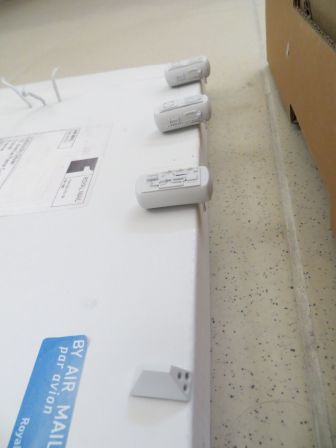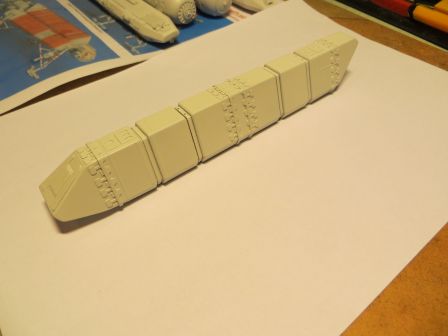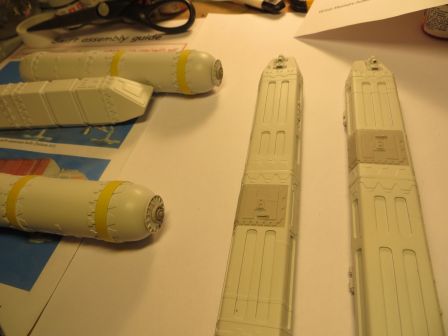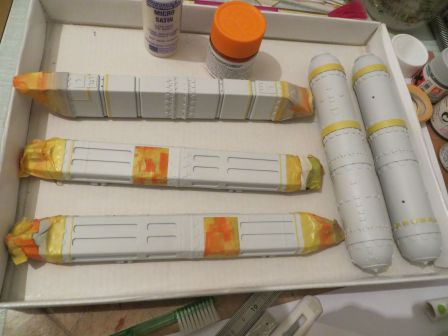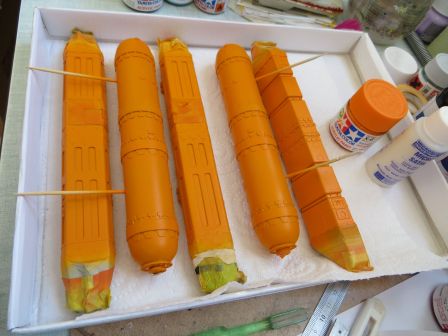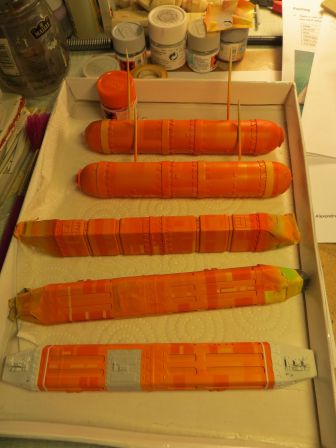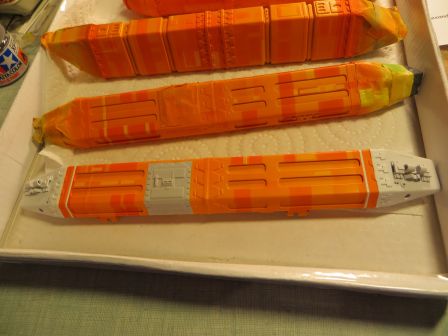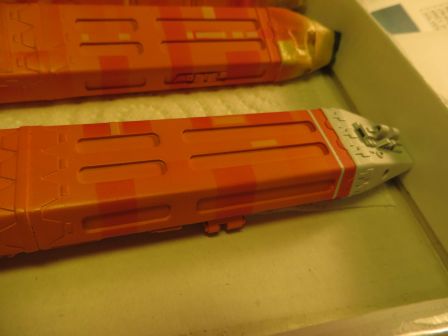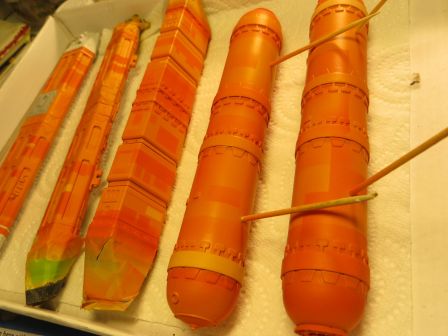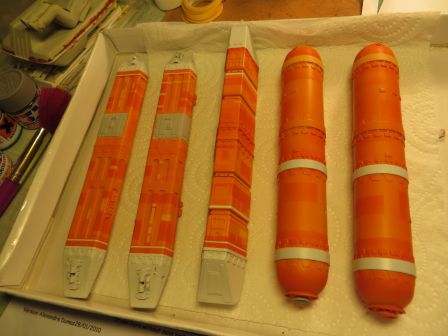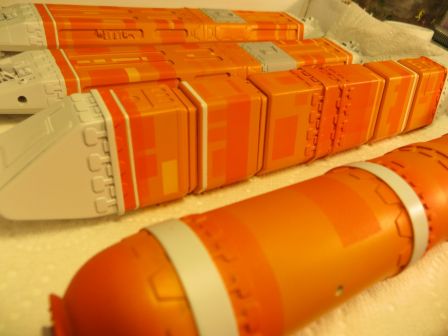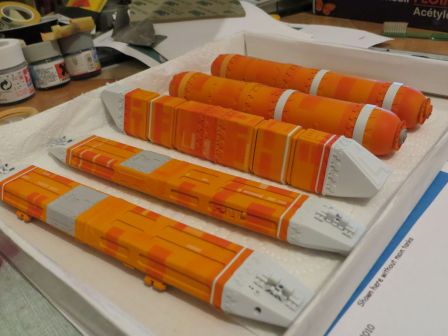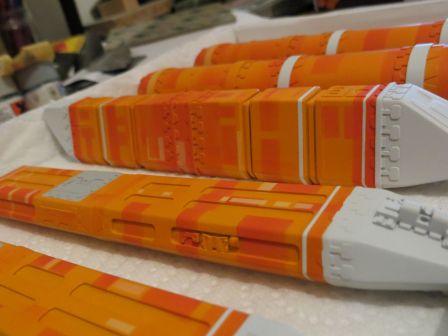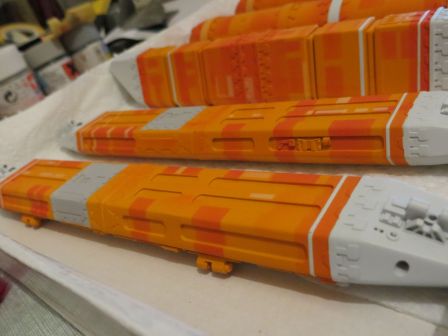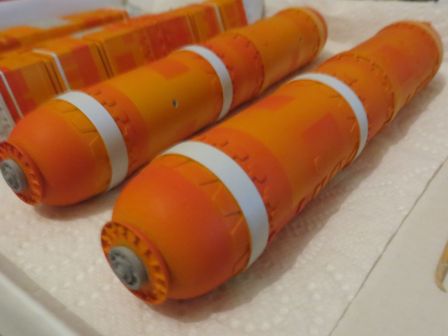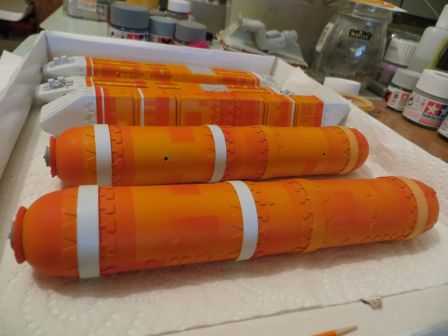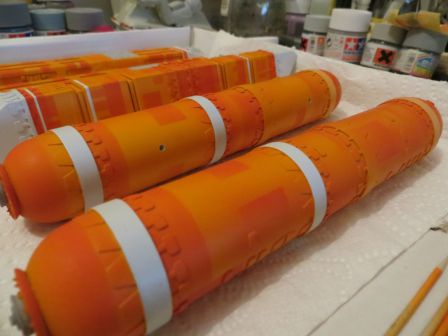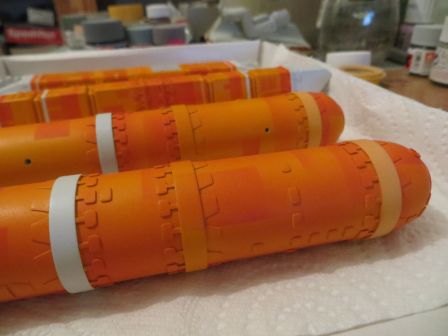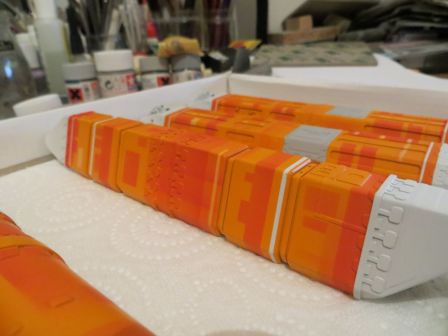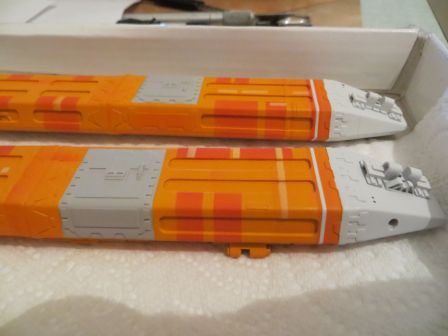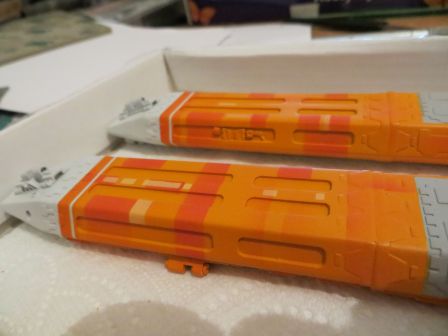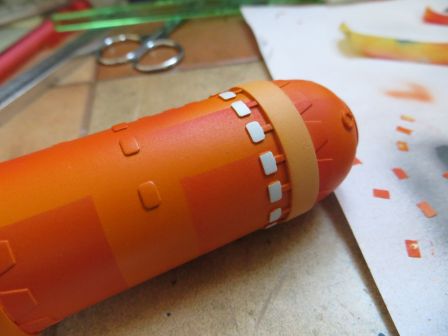Space1999 Swift - White, red and orange
Par olcabour le dimanche, 16 juin 2013, 16:27 - Swift - Lien permanent
A first coat of primer reveals rows of micro bubbles on the side modules, quickly worked with filler.
White paint
Space1999 are not pure white, but slightly off-white. So I mixed white Tamyia with sky gray (Tamiya Xf19). Over a white background you can easily see the difference. Over another more colorful or black background, the eye and the camera accommodates it as a white (which is the goal).
The white panels were masked
Orange
Then came the difficulty of finding the right red color ... Which is not red at all in fact on the studio model ! It is frankly orange, with a heavily worked panneling made of different levels of orange and red orange.
So I went on basic orange (Tamiya X6).
The paneling is done with red too, but staying subtle and playing with the flow of the airbrush to softly darken the orange base color. A little like a postshading, I used a rather heavily thinned paint (at least 80/20 alcool/paint), and a very low pressure .3/.4 bars (5 psi I think, very near the loose of pressure), and the airbrush in double action (to be very soft in the paint flowrate). This way, painting a panel need several passages to really paint it. So I played with this to add more or less red paint over the orange, so I get lot's of level of tons of color, from orange to red-orange to near full red pannels.
With this technique, near no paint is going out of the tiny flow, so you just need to mask the panel itself, not the whole model. During painting stage, I had photos of the studio panels on an ipad on hand. So each panel is quickly masked : four large tamiya tape, 2 for just a corner, or only one if I just want the separation line (mostly on the dorsal tanks).
Some panels are then done with a mixture of light orange and light pink.
